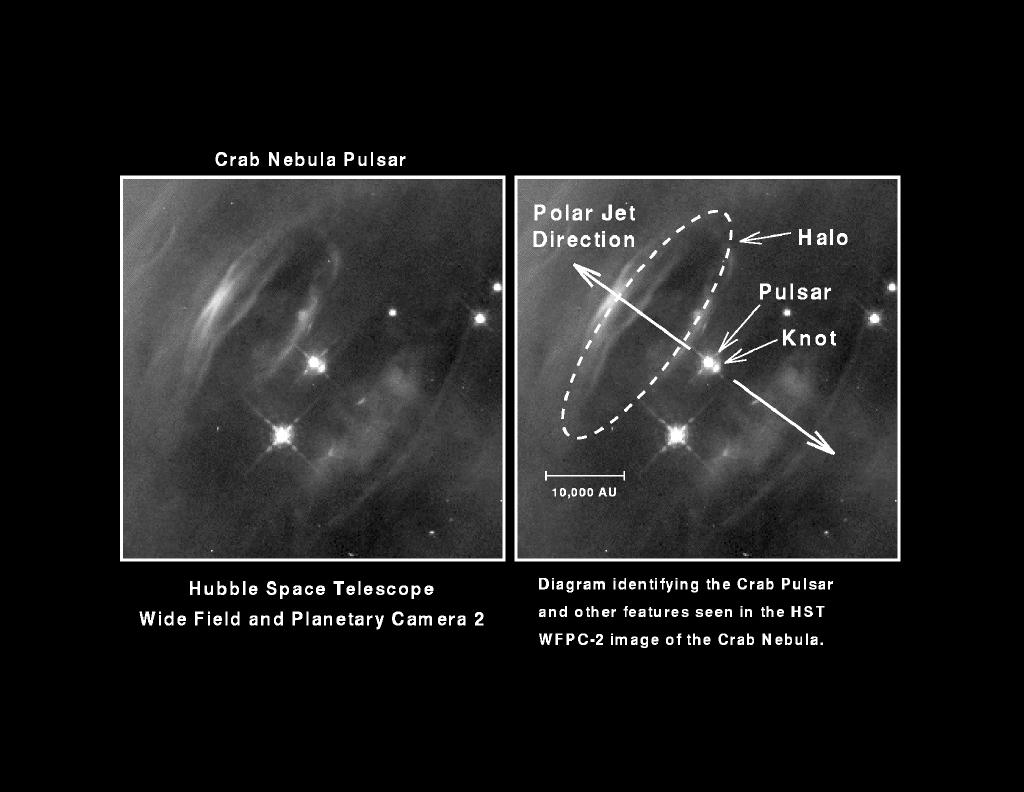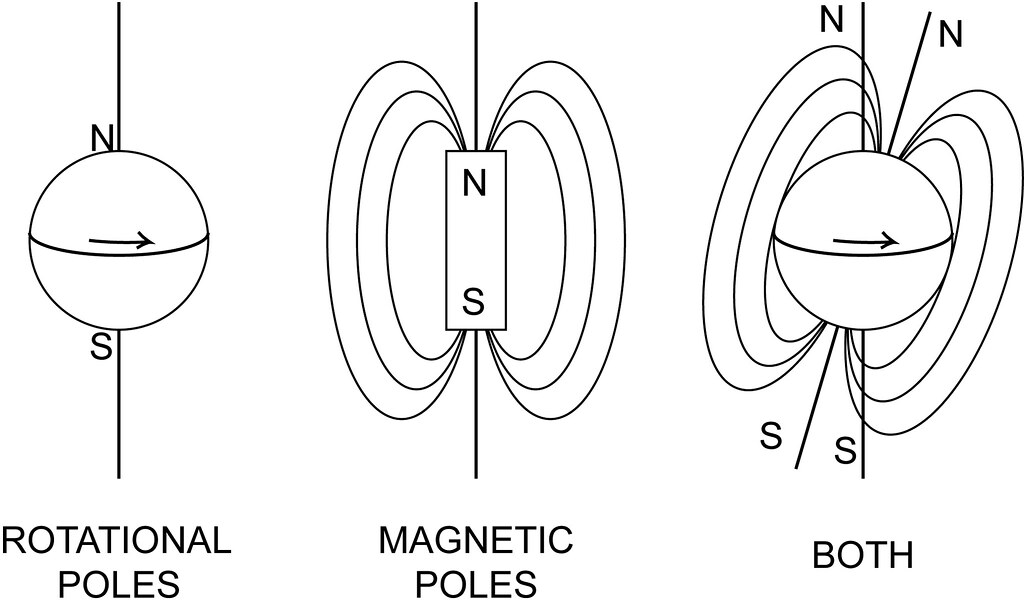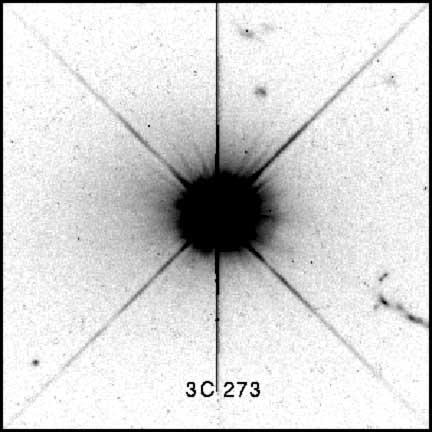 Quasars vs Pulsars
Quasars vs Pulsars
Ever get pulsars and quasars confused? I do – they both sound to me like something from Star Trek that you use to stun the Romulans. The words may sound alike, but the objects aren’t even similar. Here’s the short answer: a pulsar is a star, and a quasar is a galaxy.

Credit: Hubble Space Telescope
Caption: Crab Nebula Pulsar
What is a Pulsar?
Basic Object: A star
Size: 20 km in diameter (that’s the distance from the tip of Alki Beach to the middle of downtown Bellevue.)
What makes it cool: It has a beam of light that is swinging around like a lighthouse, causing the star to appear to “pulse” THIS INFORMATION MAY BE OUT OF DATE. IT WAS TRUE OF OUR UNDERSTANDING OF HOW PULSARS WORK IN 2008, BUT FINDINGS REVEALED AT THE AAS JANUARY MEETING IN 2009 MAY HAVE CHANGED THIS. I HAVEN’T READ THE PAPERS YET.
Discovery attributed to: Jocelyn Bell Burnell
Discovery Year: 1967

Caption: Earth’s Various Poles
A pulsar is a neutron star that’s spinning in a special way. (Remember, everything in the universe spins). First you need to know something about poles. The Earth has two north poles and two south poles. Yes, it’s true. One set is because the Earth is spinning: the poles are the tips of the axis that the Earth spins on. The other set is because the Earth has a magnetic field: all magnets have a north side and a south side. On Earth, these two sets of poles are slightly misaligned.
In a pulsar, the poles are even more misaligned, so as the star spins, the magnetic field is swung around in circles. When this happens to a neutron star, you get a super-bright beam of light beaming out from the magnetic poles. Since these poles are swinging around, so do the beams of light – just like a lighthouse.
“Light” in this case can also mean X-Rays, Gamma-Rays, or other invisible kinds of light. To learn more about neutron stars, refer to the links below.
What is a Quasar?
Basic Object: The middle of an active galaxy
Size: too far away to measure, but they comprise the entire middle section of their galaxy, encompassing many stars.
Cool Fact: Quasar is short for QUASi-stellAR radio source, or QSO: Quasi-Stellar Object
Original Discovery attributed to: Cyril Hazard, Maarten Schmitt and their co-workers
Discovery Year: 1950s

Credit: Hubble Space Telescope, John Bahcall
Caption: Quasar with Spikes
When quasars were first discovered, no one knew what they were. On the photographic plates the objects looked like bright stars. In most deep-space photographs stars have spikes; it’s one of the ways you can tell if you’re looking at a galaxy or a star. (They’re called diffraction spikes, and are just an artifact of the photograph). Unfortunately, the light from these “stars” was very odd: the spectrum didn’t match up with any known star types. So, the scientists said they were “quasi-stellar.”

Credit: Hubble Space Telescope, John Bahcall
Caption: Quasar Looking Like a Galaxy
It took them years to realize that the spectra were weird because the quasars were humongously far away. They were farther away than anything that had ever been seen. (If you want to know how distance will change the spectra of stars and galaxies look up “redshift” in your favorite astronomy reference book or website). Also, as telescopes got better, astrophysicists noticed that quasars didn’t really look quite as much like stars as they had originally thought.
When scientists realized how far away quasars actually were (up to 13 billion light years away), they also realized that the quasars must be amazingly bright. We now know that they’re some of the brightest things out there: a halo of high-energy matter around a black hole at the center of a baby galaxy.
So, quasars are special because they’re some of the farthest-away things that we can detect.
Brain Games
Still having trouble keeping the words quasar and pulsar straight? Here’s my mnemonic: “Quasar means QUASi-stellAR, which is NOT a star, Pulsar means it pulses, flashing like a lighthouse.”
Want More?
Pulsars
http://imagine.gsfc.nasa.gov/docs/science/know_l1/pulsars.html
Related Topics: Neutron Stars, Black Holes, Magnetic Fields
Quasars
http://csep10.phys.utk.edu/astr162/lect/active/quasars.html
Related Topics: Active Galaxies, Active Galactic Nuclei (AGN), Redshift, Expansion of the Universe, Black Holes






Have read in other scientific publications that there are quasars at 18 t0 20 billion light years away. How can that be if the big bang happened 13,7 billion years ago?
Thanks
Hmm. That’s a good point. What are the publications you mention?
It is because 13.7 Billion light years marks the centre and the objects 18-20 bly indicates that they are at the opposite side from the centre of the sphere of universe, as we are to them.
The big bang occurred in every direction, meaning the universe spans in a completely opposite direction than of our galaxy. Simply, these quasars are on the opposite of the Big Bang.